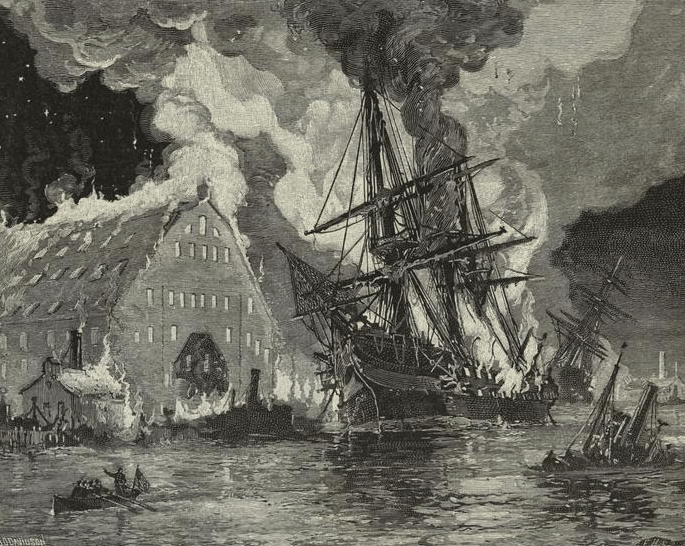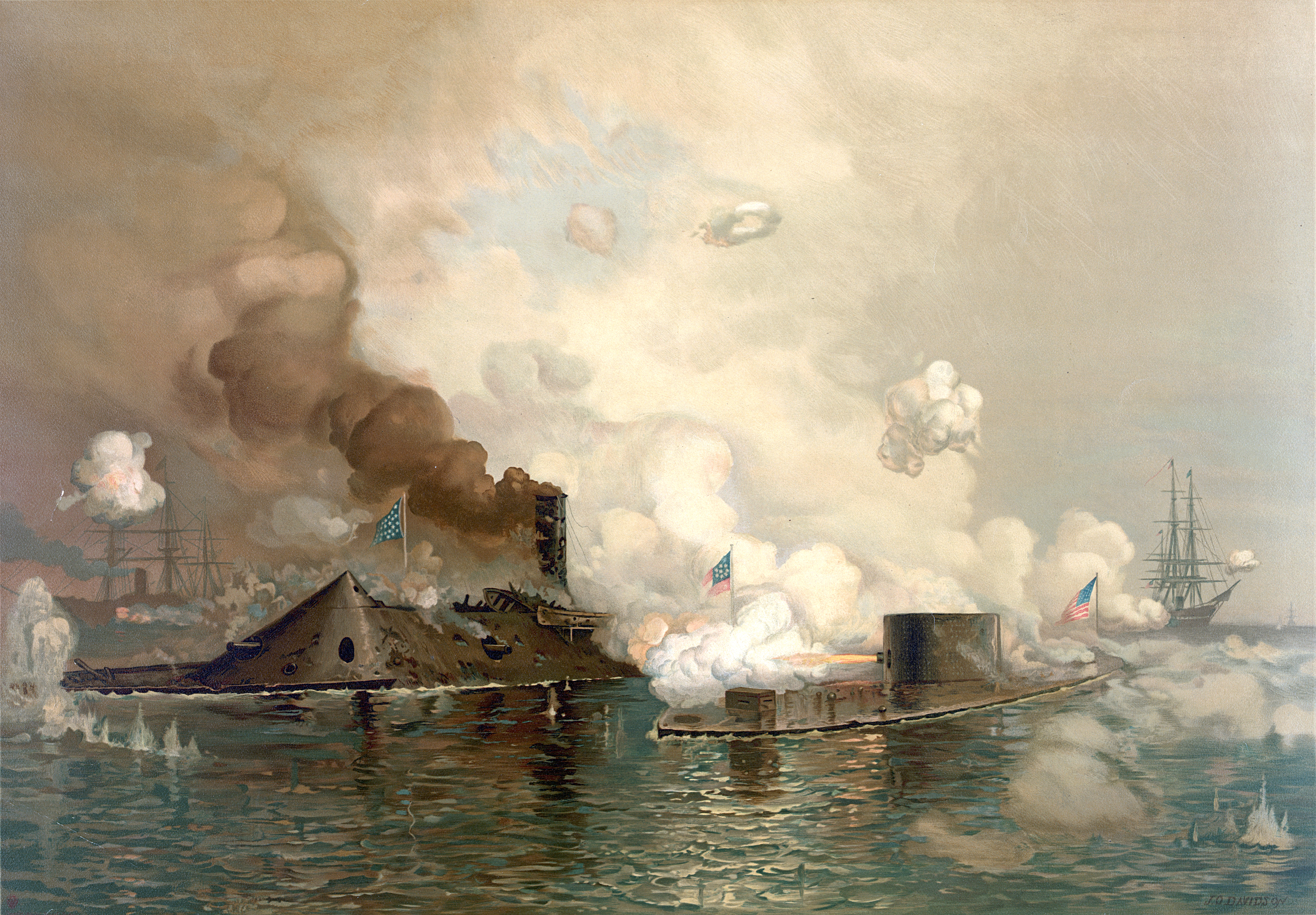-
Wales and the Welsh in the American Civil War: Part I
Part I: Famous Welsh Americans and the Confederate States
Prior to the outbreak of the American Civil War, Welsh immigration to the United States had been mainly, but not entirely, to the north: the farmlands of the Ohio valley, the industrial centers of the north and to the coal mining regions of Kentucky, Pennsylvania and Virginia. Although the southern Welsh population was lower than the north’s, Welsh surnames can also be found in the south, including among those families owning slave-holding plantations.
Kentucky Republican Abraham Lincoln beat Illinois Democrat Stephen Douglas in the November, 1860 American presidential election, amid a contentious battle over the future of slavery in the United States.
Prior legislation had restricted slavery to the already existing slave states and banned the importation of new slaves to US territory. Pro-slavery politicians demanded the expansion of slavery to new states and the western territories, that the federal government invalidate anti-slavery laws in states protecting slaves and force those states to recognize and enforce ownership of slaves, including through their capture and the prosecution of citizens who aided their escape.
Less than two months after Lincoln’s election victory, South Carolina became the first state to secede from the United States. Mississippi soon followed on January 9th, 1861.
A Confederate President
The most famous American of Welsh ancestry in the American Civil War was Jefferson Davis, first and only President of the Confederate States of America.
 Davis’ father’s parents emigrated separately from Snowdonia, and later met and married in Georgia. Their son, Samuel Emory Davis, served in the Continental army during the Revolutionary War.
Davis’ father’s parents emigrated separately from Snowdonia, and later met and married in Georgia. Their son, Samuel Emory Davis, served in the Continental army during the Revolutionary War.Samuel Davis named his youngest child, Jefferson, after President Thomas Jefferson. Youngest of ten siblings, Jefferson Davis grew up on and older brother’s cotton plantations and attended the US Military Academy at West Point. He went on to a career as a lieutenant in the Army in the Mexican-American War, before becoming Franklin Pierce’s Secretary of War, later a Senator for the state of Mississippi and the owner of a large cotton plantation with more than 100 slaves.
Davis married twice, first to the daughter of future President Zachary Taylor, Sarah, who sadly died only three months after their wedding when the couple contracted malaria. Davis suffered from recurring bouts of this disease, the effects of wounds sustained during the Mexican-American war and trigeminal neuralgia, a disorder of the nerves in the face. It has been said to be the most painful ailment known and was nicknamed “the suicide disease,” for the bouts of excruciating suffering it causes. Today there are medications to treat this disorder, in Davis’ time there were none.
Upon Mississippi’s secession, Davis sent a telegraph to the governor, offering his service in any capacity. Weeks later, a constitutional convention of the seceding states met and chose Davis as their president. His second wife, Varina, wrote, "[r]eading that telegram, he looked so grieved that I feared some evil had befallen our family."
Initially, Davis was revered for his political and military experience but he soon ran into difficulty building cooperation among the fractious Confederate States, among his own generals and even his Vice President. When Davis instituted a draft, he was accused of being a military tyrant. Texas went so far as to remove its troops to fight a war against native Americans. Historians later faulted him for poor military strategy, for appointing friends to high ranking military positions and for ignoring non-military crises. Davis refused to appoint a commander-in-chief, keeping that role for himself, until Robert E. Lee’s appointment in 1865, only four months before the war ended. Davis spread troops out to defend all Southern territory equally and allowed Lee to invade Northern territory twice, which gave the North the opportunity to seize the Mississippi river and split the Confederacy.
On April 3, 1865, Davis issued his last proclamation as president of the Confederacy on receiving Robert E. Lee’s letter of surrender. Leaders of the Confederacy discussed plans to move Davis’ cabinet to Havana, Cuba, but this was never put into practice. Less than two weeks later, President Lincoln was fatally shot and shortly thereafter, Andrew Johnson issued a $100,000.00 reward for Davis’ capture, accusing him of plotting Lincoln’s assassination. Davis met with his cabinet a final time on May 5, 1865, and officially dissolved the Confederate States of America.
Charged but never tried with treason, Jefferson Davis was imprisoned for two years before finally being released on bail, and remained under indictment until President Johnson issued a general amnesty in 1868. He spent the final years of his life on the estate of an admirer, writing The Rise and Fall of the Confederate Government (1881) and A Short History of the Confederate States of America (1889). At 81, Davis caught a severe cold while travelling, which became bronchitis made worse by a bout of malaria. He died in December, 1889, in the presence of his wife and friends, and was buried in Richmond, Virginia.
More on Jefferson Davis
Autobiography of Jefferson Davis (1890) (available as an ebook on Amazon)
Jefferson Davis, American William Cooper (Knopf 2000)
Rhys Davies and The Tredegar Ironworks

An essential resource to the Confederacy during the war was the Richmond, Virginia Tredegar Iron Works, which produced equipment and ammunition. Although no longer connected to him during the war, it owed its existence to Welshman Rhys Davies of Tredegar.
Rhys Davies was an engineer and millwright from Llangynidr in Breconshire, Wales. He came to join his father in Tredegar to work as an apprentice in the ironworks there at the age of 11, during Tredegar’s heyday as the ironworks center of the world. Davies was later sought by a former marshal of Napoleon to build an ironworks in France and to build an ironworks in New York state. In 1836, the founder of the Richmond, Virginia ironworks called specifically for Davies and his expertise in building a foundry and ironworks. In honor of Davies and his birthplace, and perhaps to cash in on the name recognition of Tredegar as the home of premier ironworkers, the owners of the Richmond ironworks wrote the mayor of Tredegar for permission to name their site the Tredegar Forge and Rolling Mill.
Davies was stabbed to death by an employee in 1838 while working to establish a second rolling mill at nearby Belle Isle, well before Lincoln’s election and the start of the war. He didn’t live to see later managment replace skilled workers at the Tredegar Ironworks with slaves, the strikes that followed, the war and the vital role the foundry and mill he created played in the Reconstruction following the war.
The Tredegar Ironworks was essential to the Confederate war effort. Tredegar’s fires fueled the Confederate States’ needs for guns and ammunition and supplied the plates to furnish its ironclad warships, including the CSS Virginia.

More on Rhys Davies
Tredegar Iron Works: Richmond’s Foundry on the James Madison, Nathan Vernon (Arcadia Publishing 2015)
Plaque for Tredegar ironworks engineer Rhys Davies BBC News, Retrieved March 27, 2016
A Confederate Ironclad Captain
Approximately a year after the secession of Confederate states and the first battle of the war, the CSS Virginia met the Union’s USS Monitor at Hampton Roads, an area where the mouths of the Elizabeth River, Nansemond River, the James River and several smaller rivers meet in the state of Virginia, to pour into the mouth of the Chesapeake Bay and then the Atlantic ocean.

The CSS Virginia was the first ironclad, a steam-powered warship protected by metal plates, built for the navy of the Confederacy.
In early March, 1862, the newly completed and rechristened CSS Virginia steamed out to Hampton Roads under her commanding officer, Franklin Buchanan, and her executive officer, Lieutenant Catesby ap Roger Jones.

Catesby ap Roger Jones was born in Fairfield, Virginia, the son of Major General Roger ap Catesby Jones and Mary Ann Mason. The Jones family produced many famously decorated and distinguished members of the American armed forces, with members of the family serving in the Revolutionary War, the War of 1812, the Mexican-American War, American Civil War and both World Wars. Catesby ap Roger Jones was one of thirteen children, many of whom served in the Army and Navy and on both sides of the Civil War.
Jones was injured in Paris in 1852, during Prince Louis-Napoléon Bonaparte staged “self-coup.” The US Navy later sued him for the costs of treatment of those injuries but this was, fortunately for him, disallowed by the courts. (59 U.S. 92, The United States v. Catesby Ap Roger Jones December Term, 1855) On returning to the United States, Jones was assigned to the U.S. Navy's Ordnance Department at the Washington Navy Yard, as an assistant to Rear Admiral John A. Dahlgren, developer of the Dahlgren gun, a cast-iron muzzle loading naval cannon. Four years later, as one of two people who could operate a Dahlgren gun, Jones would be assigned to the USS Merrimac as its ordnance officer, when it began service in 1856.
The night of April 16, 1861, secessionists sank light boats in the channel to block the removal of ships from the Gosport Navy shipyards at Norfolk, Virginia. The next day, April 17, 1861, President Lincoln declared a blockade of Confederate waters, Virginia seceded from the Union and Catesby Jones resigned his commission in the United States Navy to become a Lieutenant in the Confederate States Navy. Three days later, the Navy evacuated the Norfolk shipyards and burned the USS Merrimac to the waterline, sinking it to prevent its capture.

Confederate forces seized the shipyards and raised the remains of the Merrimac. The hull was rebuilt and steel plates, forged at the Tredegar Ironworks in Richmond from hastily scavenged iron and steel, were used to reinforce it and to deflect enemy ordnance. An iron ram was added to the ship’s bow and it was recommissioned the CSS Virginia. Under the commander of the Confederate navy, Catesby Jones oversaw theVirginia’s refurbishing and ordnance, recruited and trained its new crew.On March 8, 1862, the Virginia left Norfolk on a mission to attempt to break the Union’s naval blockade in what would be the bloodiest battles in American naval history prior to Pearl Harbor.
The Virginia first engaged and exchanged fire with the USS Cumberland, sinking it and then turning to ram the USS Congress. The Virginia lost its ram in the Congress’ hull but sank both ships and killed many of their crews before engaging and firing on other Union ships, sending the USS Minnesota aground. The Virginia’s commander, standing on deck to fire on Union troops on the shore, was struck in the leg by a musket ball and turned over command to his executive officer, Catesby ap Roger Jones.
Jones was forced to turn the Virginia back up the James river to maneuver and, as darkness fell, battle ended for the day. The Virginia’s crew inspected damage to their ship but failed to notice the loss of the bow ram. At midnight, the USS Congress exploded. The Minnesota’s paymaster later wrote, “Pieces of burning timbers, exploding shells, huge fragments of the wreck, grenades and rockets filled the air and fell sparkling and hissing in all directions… an immense column of fire, one end on the earth and the other in the heavens…. We were about two miles from the wreck and the dull, heavy explosion seemed almost to lift us out of the water”. From A History of Ironclads: The Power of Iron Over Wood, John V. Quarstein, The History Press (2007)
The next morning, the Virginia’s crew was reported to have begun their day with “two jiggers of whiskey and a hearty breakfast.” (A History of Ironclads) The Virginia steamed back into Hampton Roads and fired on the trapped Minnesota.
The Union’s own ironclad, the USS Monitor, had arrived that night and moved in to protect the Minnesota and its crew. The Monitor and the Virginia circled each other at 100 yards, testing their shot and defense. Catesby Jones realized that he didn’t have the right shot to attack another ironclad and turned to fire on the Minnesota. Taking on water from the missing ram, which the Virginia crew had not yet realized they had lost, the Virginia ran aground. The Monitor began firing on the Virginia as it freed itself from the shoal and turned to attempt to ram the Monitor, a glancing attack that only opened new bow leaks. Noting the tide was turning, Jones turned the Virginia up the Elizabeth River. Deciding that the Virginia was fleeing the battle, the Monitor gave up pursuit. Both sides claimed decisive victory.

“Gallant and meritorious conduct” during the battle of Hampton Roads and the battle of Dewry’s Bluff on the James River earned Catesby Jones a promotion to the rank of Commander. He was sent to take charge of the Confederate ordnance works in Selma, Alabama and spent the rest of the war supervising the production of heavy guns there.
After the war, Jones went into business and later settled in Selma. Many years later, the father of a man fueding with his son shot and killed Jones. Catesby ap Roger Jones was buried in Live Oak Cemetery at Selma, Alabama.
More on Catesby Ap Roger Jones:
Navies in the Civil War: Union and Confederate Battles, Confederate Ships Afloat, Naval Chronology, Biographies, USS Monitor, Battle for Hampton Roads, Ordnance Testing Against Armor US Navy, Department of Defense (Progressive Management, September 15, 2012)
The Family of Captain Catesby Ap Roger Jones Martha Tyson (Martha H. Tyson, 1989)
A History of Ironclads: The Power of Iron Over Wood John V. Quarstein, The History Press (February 28, 2007)
The Civil War Naval Encyclopedia, Volume 1 Spencer Tucker and William E. White
(ABC-CLIO, 2011)American Civil War: The Definitive Encyclopedia and Document Collection Spencer C. Tucker, (ABC-CLIO 2013)
-
-
-
Writing On AmeriCymru
Vacancies for members on AmeriCymru!!! We are also looking for part time correspondents. Join the site and message me (Ceri Shaw) on the site if you are interested.READ MORE HERE















